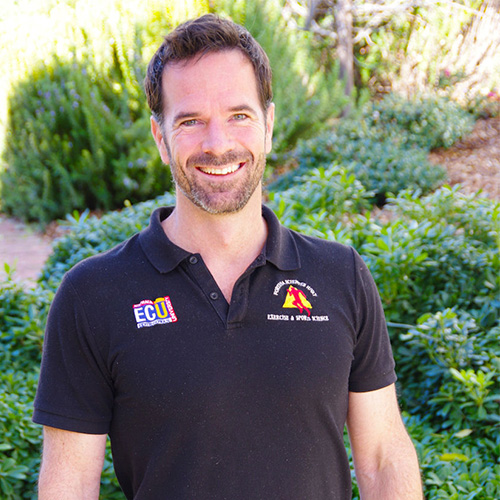Scientific Programme
Biomechanics & Motor control
IS-BM03 - Biomechanical and physiological trade-offs in sprint and endurance performance: lessons from the animal kingdom to human athletes
Date: 02.07.2025, Time: 11:00 - 12:15, Session Room: Arengo
Description
Animals including human athletes move using energy generated (work done) by muscles, which are activated by the nervous system. Optimum movement performance can occur when muscle activation is maximal and coordination optimal (if maximum strength or speed are required) or when the energy cost of activation is minimized (if movement economy is required), so a trade-off between speed/strength and endurance is apparent. However, no single musculoskeletal design allows force, speed, and efficiency (economy) to be optimized, and some balance must be achieved. This integrative symposium aims to explore trade-offs created by the need for muscle-tendon units to produce forces and power of different magnitudes, at different lengthening-shortening speeds, and over different overall durations (A. Blazevich), while investigating the impact of these trade-offs in various animal species known for speed or endurance (P. McGuigan), and finally addressing these aspects and their implications for the design of optimized resistance training protocols in human athletes (B. Van Hooren).
Chair(s)

Per Aagaard
University of Southern Denmark, Dept Sports Science and Clinical Biomechanics
Denmark

Speaker A
Anthony Blazevich
Edith Cowan University, School of Exercise and Health Sciences
Australia
Read CVECSS Rimini 2025: IS-BM03
How human athletes move: trade-offs in anatomical and physiological design
Animals including human athletes move using energy generated (work done) by muscles, which are activated by the nervous system. Optimum movement performance can occur when muscle activation is maximal and coordination optimal (if maximum strength or speed are required) or when the energy cost of activation is minimized (if movement economy is required), so a trade-off between speed/strength and endurance is apparent. Peak muscle force is proportional to the muscle’s physiological cross-sectional area (PCSA) while its maximum shortening speed is set by the length of its longest fibers. Yet, inertial masses increase with PCSA and fiber length, reducing limb (and whole body) acceleration and increasing energy cost, thus facilitating “fatigue”. So, unless maximal force is primarily required, a balance must be struck between PCSA and fiber length to minimize mass. Thus, no single design allows force, speed, and efficiency (economy) to be optimized, and some balance must be achieved. And this balance must be achieved with consideration of muscle fiber types and fiber pennation angles (the latter influencing fiber rotation, and thus gearing during contraction), which also influence maximal muscle power. In human athletes (and nonathletes), fatigue manifests in the nervous system and muscles, and is affected by muscle coordination (efficiency) and muscle fiber type as well as muscle oxygen delivery (e.g. cardiac output) and utilization (e.g. capillarization). Here too there are trade-offs that affect the physiologic make-up of single individuals (and different animal species) while also governing the types of exercise training done by athletes. Finally, muscles suffer from velocity-related force limitations, impacting high-speed actions and imposing energy-related work limitations (i.e., fatigue). Long tendons can alleviate these problems by momentarily storing the energy of muscles and then releasing it rapidly – the rate of work is increased so power is amplified. Tendon action also reduces (or mitigates) the need for muscles to stretch and shorten, thereby reducing muscle damage (imposed during lengthening) and muscle work and thus energy cost (expensive during shortening), in turn reducing fatigue and improving endurance. Yet, tendon stiffness must vary with the force-time requirements of the task, dictating tendon properties to vary between muscles, between animals (incl. athletes in different disciplines), and over time as physical activity patterns change, imposing a dynamic stiffness-compliance trade-off. Utilizing this framework, the aim of this presentation is to explore trade-offs created by the need for muscle-tendon units to produce forces and power of different magnitudes, at different lengthening-shortening speeds, and over different overall durations. The presentation will investigate the impact of these trade-offs in animal design and on the training of human athletes.

Speaker B
Polly McGuigan
University of Bath, Department for Health
United Kingdom
Read CVECSS Rimini 2025: IS-BM03
Trade-offs in animal movement: speed and agility vs endurance
Investigating performance through an animal lens provides examples of where specialization has evolved due to one particular area of performance being key to the survival of an individual; and thus natural selection rather than training has been the driver of adaptations favoring speed and agility or endurance. Exploring these examples at both the organismal and muscle-tendon unit level provides insight into the potential trade offs of this specialization, which are not always as obvious as they might seem. This is because, even in what would be considered the most extreme examples of specialization, there are rarely only two traits that trade-off against each other and it is necessary to consider them within the more complex survival needs of the single animal. This presentation will explore these trade-offs through some examples of animals using cursorial (running) and saltatorial (hopping) locomotion. The highly specialized digital flexor muscles of the horse enable highly efficient locomotion at slower speeds, but what constraints do their very short muscle fascicles and long tendons place on speed and agility and how would a change in the properties of the those tendons, due to injury or age, impact their function? The fastest land mammals (eg the cheetah) are undoubtedly extreme in terms of their speed and agility, with high peak power output of their hindlimb muscles compared to other large mammals, and about 20% higher than their prey species. But maximum muscle fiber stress (F/CSA) and power alone do not explain the differences between the large predators such as the cheetah and the lion, and in exploring the other factors that determine their remarkable speed and agility we can learn how trade-offs can be optimized to maximize hunting (i.e. survival) success. Finally, by also looking at a more generalist animal, the goat, we will demonstrate how trade-offs in the architecture of different muscles allows plasticity of function to adapt to highly different locomotion conditions (i.e. running, jumping and climbing).

Speaker C
Van Hooren Bas
Maastricht University, Human Movement Sciences
Netherlands
Read CVECSS Rimini 2025: IS-BM03
Neuromuscular adaptations to resistance training in human athletes: do they hinder or help sprint and endurance performance?
Resistance training results in numerous morphological and physiological adaptations. These adaptations are broadly considered beneficial for athletic performance as well as for reducing the risk of musculoskeletal injury. However, some practitioners believe that resistance training triggers morphological and physiological adaptations that may impair physical performance and increase injury risk. However, the morphological and physiological adaptations by which resistance training might impair physical performance, the likelihood of these being evoked, and the training program specifications that might promote such impairments, remain largely undefined. This presentation will discuss how selected adaptations evoked by resistance training may not only enhance but could also impair sprint and endurance performance, or lead to increased injury risk. The presentation will address specific resistance training program variables under which such beneficial or maladaptive adaptations may be likely to occur. Specifically, it will be demonstrated that high volumes of resistance training can lead to macro- and microscopic adaptations such as increases in internal moment arms, changes in muscle architecture, and alterations in fiber typology, myocellular morphology, and intra- and intermuscular coordination, that may maximize strength at the expense of speed, or maximize speed at the expense of endurance. Finally, the implications for athletic performance and the design of optimized training protocols also will be discussed.
